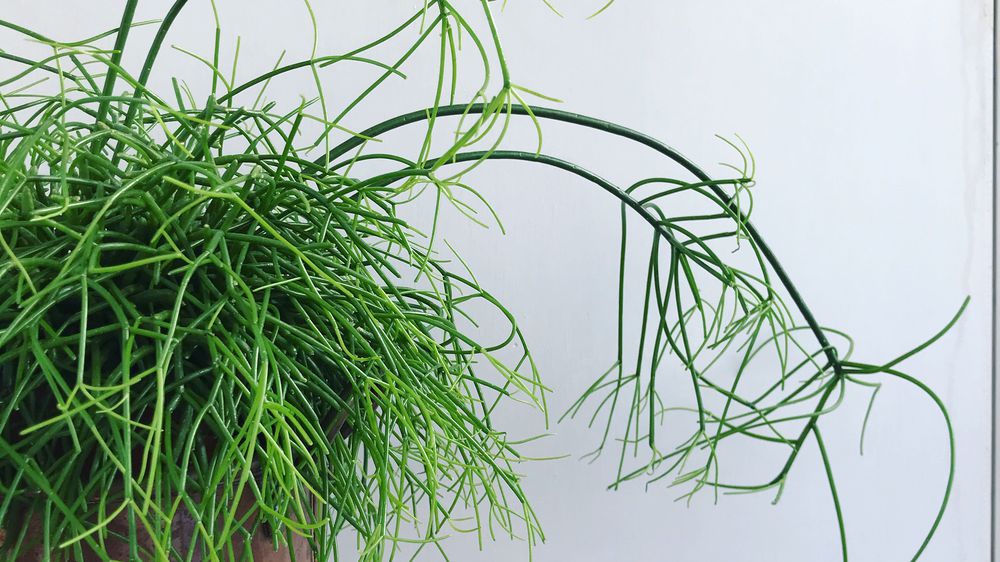Music For Plants #9

Mistletoe cactus
Rhipsalis baccifera
In lockdown our daily walk often took us past a florist who, like all other retailers, had been forced to temporarily shut her business. She had knowingly left a number of Rhipsalis baccifera in her east-facing shop window. Every time I walked past they had increased their display with a new wave of elegant yet anarchic succulent spaghetti stems, weaving in and out of each other, impossible to contain, cascading over their pots, energising and inspiring, giving two fingers to the virus.
Otherwise known as Mistletoe cactus this bizarre plant, unlike it’s cousins the desert cacti, is a tropical cactus, which means it requires less light and more humidity than it’s prickly relatives. It is widespread in Central and South America to the Caribbean, but most are found in the tropical rainforests of Brazil. It can even be found in Madagascar and Sri Lanka, the only cactus that occurs naturally outside the New World.
The name ‘Rhipsalis’ comes from the Ancient Greek word for ‘wickerwork’ and ‘baccifera’ means ‘berry bearing’. It has thin, crazy cord-like stems, small creamy white flowers in summer and white or pale pink fruit that look like mistletoe berries in winter. Unlike real mistletoe, these plants are not parasitic, but epiphytic – surviving by growing on trees and getting nutrients from the surrounding environment. In the rainforests, their tendrils can reach lengths of 6 meters or more; hanging from our ceilings in a humid bathroom they can still achieve 1-4 meters. What beautiful mop-haired survivalists they are.

Avalon Emerson – 2000 Species of Cacti
This energising, anarchic plant demanded a change of pace and Avalon Emerson’s otherworldly banger 2000 Species of Cacti is a no-brainer as a companion piece for this amazing cactus. (In fact there are about 1,750 known species of the order Caryophyllales, but it doesn’t have quite the same ring to it!)
Do plants dance? Probably not. And yet a recent study revealed that our green friends can discern the sound of predators through tiny vibrations in their leaves… ergo the crazy, cascading stems of Rhipsalis baccifera will definitely be jiggling along to the thumping beats and chiming, luminous melodies of Avalon’s 2016 gem.
Follow Avalon Emerson.


















Must Reads
David Holmes – Humanity As An Act Of Resistance in three chapters
As a nation, the Irish have always had a profound relationship with the people of Palestine
Rotterdam – A City which Bounces Back
The Dutch city is in a state of constant revival
Going Remote.
Home swapping as a lifestyle choice
Trending track
Vels d’Èter
Glass Isle
Shop NowDreaming
Timothy Clerkin
Shop Now